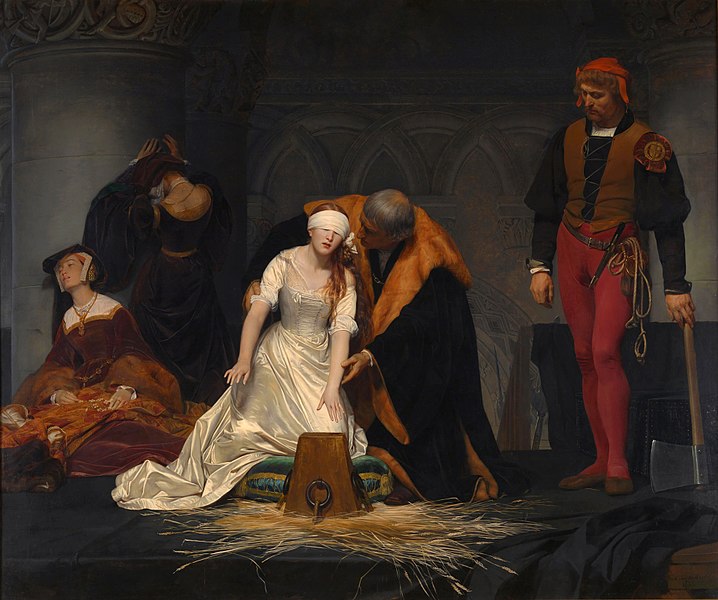settings
The Adventures of Huckleberry Finn vocabulary
3 famous people mentioned
help & settings
[x]
-
Lady Jane Grey
-
► definition
Definition:[1537 - 1554]an English noblewoman and de facto Queen of England and Ireland from 10 July until 19 July 1553.[...] She had an excellent humanist education and a reputation as one of the most learned young women of her day.[...]In June 1553, Edward VI wrote his will, nominating Jane and her male heirs as successors to the Crown, in part because his half-sister Mary was Roman Catholic, while Jane was a committed Protestant and would support the reformed Church of England, whose foundation Edward claimed to have laid. The will named his half-sisters Mary and Elizabeth illegitimate and removed them from the succession, subverting their claims under the Third Succession Act.After Edward's death, Jane was proclaimed queen on 10 July 1553 and awaited coronation in the Tower of London. Support for Mary grew very quickly, and most of Jane's supporters abandoned her. The Privy Council of England suddenly changed sides and proclaimed Mary as queen on 19 July 1553, deposing Jane. [...] Both she and her husband were executed on 12 February 1554.text from Wikipedia, licensed under Creative Commons - Attribution - Sharealike painting: By Paul Delaroche (1833) https://commons.wikimedia.org/w/index.php?curid=17589386
painting: By Paul Delaroche (1833) https://commons.wikimedia.org/w/index.php?curid=17589386
► uses
Uses:
there warn't no case of a state prisoner not scrabbling his inscription to leave behind, and his coat of arms.
"Look at Lady Jane Grey," he says [...]
Mark Twain. The Adventures of Huckleberry Finn
---
After his decease the Duke of Northumberland had the care of the King and the Kingdom, and performed his trust of both so well that the King died and the Kingdom was left to his daughter in law the Lady Jane Grey, who has been already mentioned as reading Greek. Whether she really understood that language or whether such a study proceeded only from an excess of vanity for which I beleive she was always rather remarkable, is uncertain.
Jane Austen. Love and Freindship

